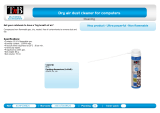
CONTENTS
ENGLISH
SAFE OPERATION ..................................................................................................1
SERVICING OF THE ENGINE ....................................................................................1
NAMES OF PARTS .....................................................................................................2
PRE-OPERATION CHECK ..........................................................................................3
BREAK-IN.................................................................................................................3
DAILY CHECK..........................................................................................................3
OPERATING THE ENGINE .........................................................................................4
STARTING THE ENGINE(NORMAL).......................................................................4
COLD WEATHER STARTING .................................................................................5
STOPPING THE ENGINE ........................................................................................6
CHECKS DURING OPERATION .............................................................................6
Radiator Cooling water(Coolant) ...................................................................................... 6
Oil pressure lamp ............................................................................................................. 6
Fuel .................................................................................................................................. 7
Color of exhaust ............................................................................................................... 7
Immediately stop the engine if;......................................................................................... 7
REVERSED ENGINE REVOLUTION AND REMEDIES ..........................................7
How to tell when the engine starts running backwards .................................................... 7
Remedies ......................................................................................................................... 7
MAINTENANCE ...........................................................................................................8
SERVICE INTERVALS.............................................................................................9
PERIODIC SERVICE .................................................................................................12
FUEL ......................................................................................................................12
Fuel level check and refueling........................................................................................ 12
Air bleeding the fuel system ........................................................................................... 13
Checking the fuel pipes .................................................................................................. 14
Cleaning the fuel filter pot............................................................................................... 14
Fuel filter cartridge replacement..................................................................................... 15
ENGINE OIL ...........................................................................................................15
Checking oil level and adding engine oil ........................................................................ 15
Changing engine oil........................................................................................................ 16
Replacing the oil filter cartridge ...................................................................................... 17
RADIATOR .............................................................................................................17
Checking coolant level, adding coolant .......................................................................... 18
Changing coolant ........................................................................................................... 19
Remedies for quick decrease of coolant ........................................................................ 19
Checking radiator hoses and clamp bands .................................................................... 19
Precaution at overheating .............................................................................................. 19
Cleaning radiator core (outside) ..................................................................................... 19
Cleaning the radiator (inside) ......................................................................................... 20
Anti-freeze ...................................................................................................................... 20
AIR CLEANER........................................................................................................21
Evacuator valve.............................................................................................................. 21
For the air cleaner with a dust cup (optional) ................................................................. 21
Dust indicator (optional) ................................................................................................. 22
BATTERY ...............................................................................................................22
Battery charging ............................................................................................................. 22
E.book 1 ページ 2009年4月23日 木曜日 午前10時31分





















